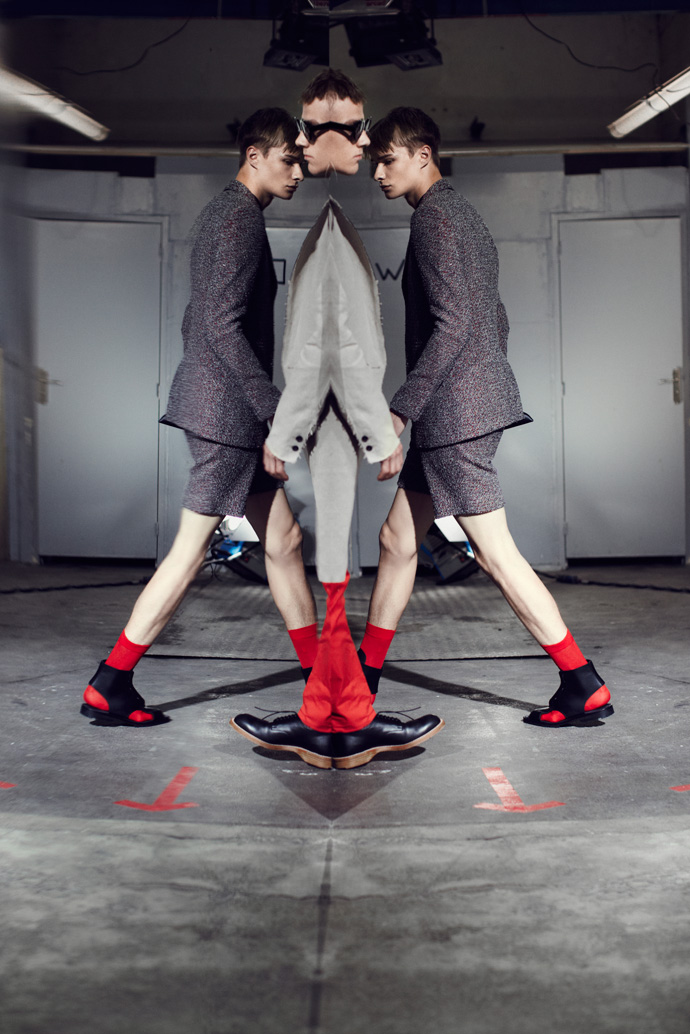-

john lawrence sullivan : in the ring
-Tokyoite Arashi Yanagawa, the man behind menswear label John Lawrence Sullivan, has quickly become a fixture of the men’s fashion circuit.
The choice of name for the label is perhaps the most telling. John Lawrence Sullivan, the man, is a heavyweight boxing champion, also known as the “Boston strong boy,” and godfather of sorts to Arashi, who quit a promising boxing career to fight in another type of ring.
Ever since entering the seasonal arena of fashion week in Paris, he’s championed his collections in the eye of attention, with the likes of Suzy Menkes a constant follower. In this context, Arashi’s unconventional vision of the sharp tailored sportsman is most compelling.
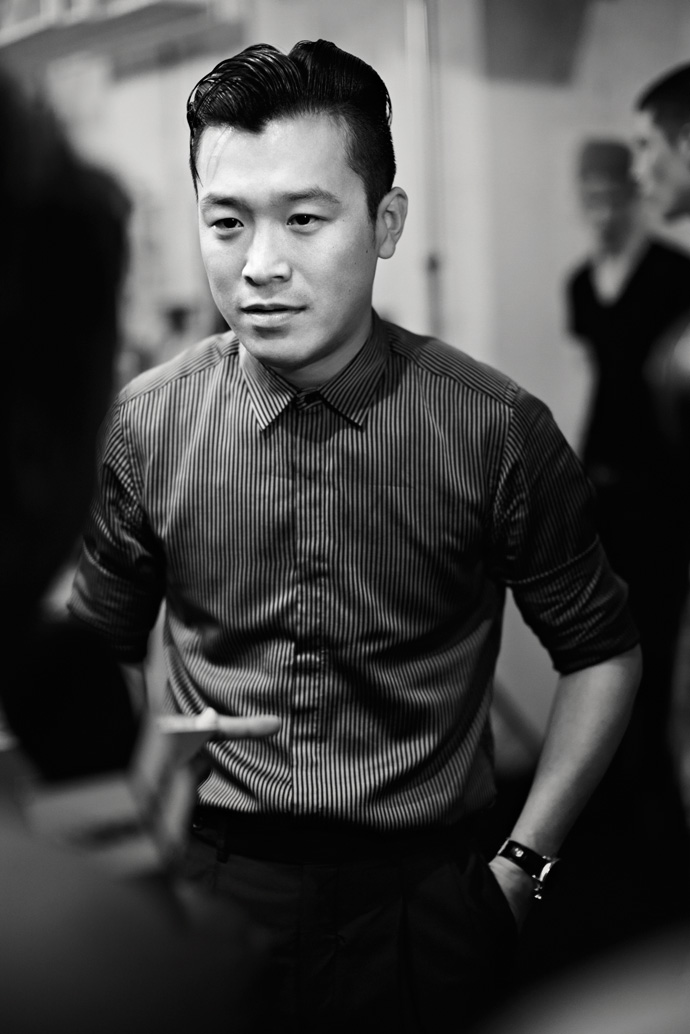 Arashi Yanagawa backstage after his John Lawrence Sullivan presentation. Photography by René Habermacher
Arashi Yanagawa backstage after his John Lawrence Sullivan presentation. Photography by René HabermacherRené Habermacher: Hello Arashi, how is it being back in Tokyo after your last show in the ring fight of Paris fashion week?
Arashi Yanagawa: I’m getting ready for the next match in June. While I’m always relaxed in the end, I also always begin thinking about the next collection right away. It’s exactly the same as in boxing.RH: In your work, specially your most recent collection, I sense a strong fascination with British culture.
but you’re successfully showing your 3rd collection, you chose Paris to present it…
AY: I believe Paris is the most important location for fashion in terms of the both the culture and the history of the industry. Paris has a special eye for beauty and elegance. No other place draws as many journalists, buyers, and fashionistas. All of this naturally makes Paris a very attractive city for presenters, but I also appreciate how strict everyone in Paris is towards creativity.RH: And what is it with you and London?
AY: London has street fashion just like Tokyo, but it also brings history and tradition into the mix. I’m impressed by the way all of this culture has just naturally rubbed off on the younger generations. Another example of something that has really moved me is the culture of the London market where you see young people today buying and even demanding clothing designed a century ago.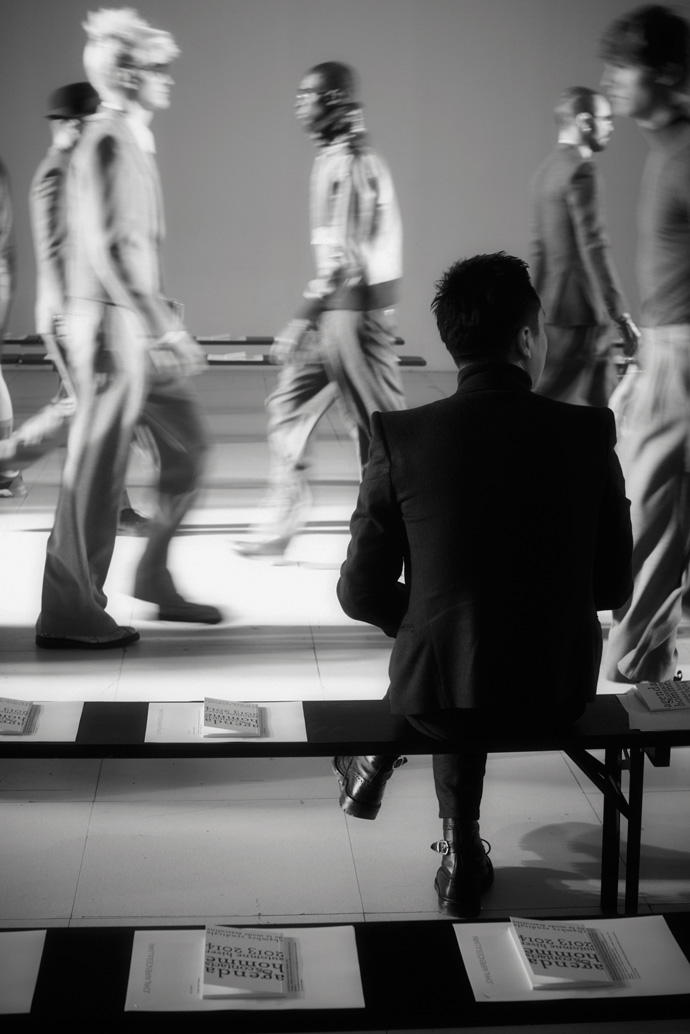
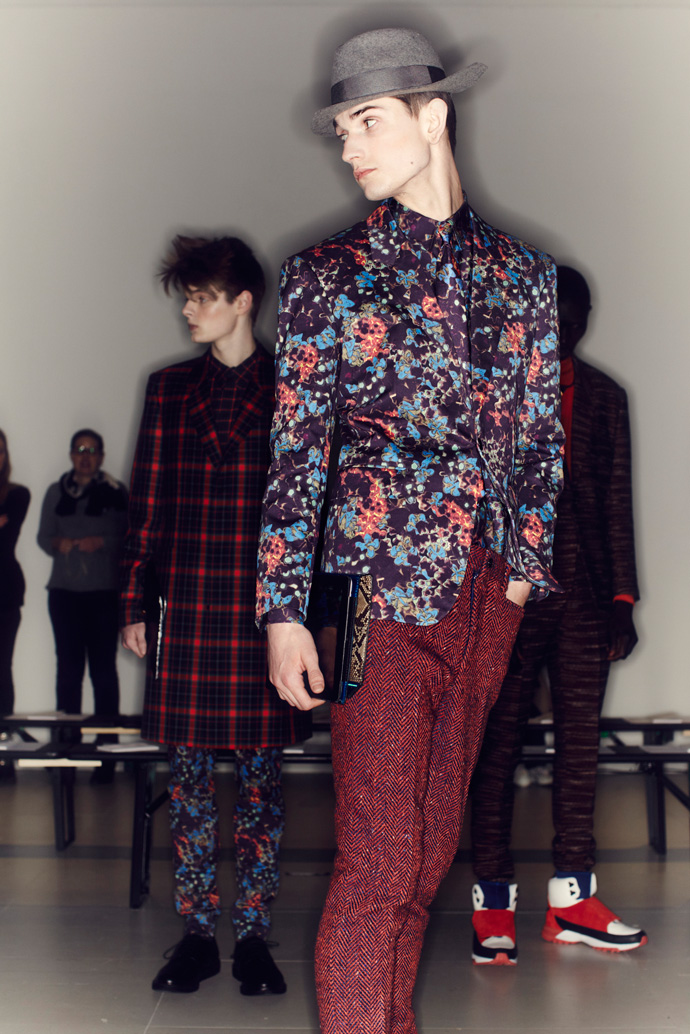 Rehearsals for John Lawrence Sullivan FW13. Photography by René Habermacher
Rehearsals for John Lawrence Sullivan FW13. Photography by René HabermacherRH: how do you decide for what you’ll go next? what is your creative process?
AY: I input the “sense” of the things I see or hear in my daily life and stockpile them. These could be colors, silhouettes, light, or even materials. But, I make an effort to express my own sense of the now rather than just making things based on historical research.RH: For the current summer collection the theme was influenced by the Bauhaus movement.
Why did you feel the urge for this now, and how did you translate that into the clothes?
AY: I had a chance to go to Berlin, so I paid a visit to the Bauhaus school in Dessau and took in the artwork there. I found the combinations of wood, leather, and metal used in the products there particularly interesting, and thought it might be fun to try doing the same things with apparel. So, I made the theme “Bauhaus” and began putting together the collection while referencing architectural cutting, artistic colors, and product techniques.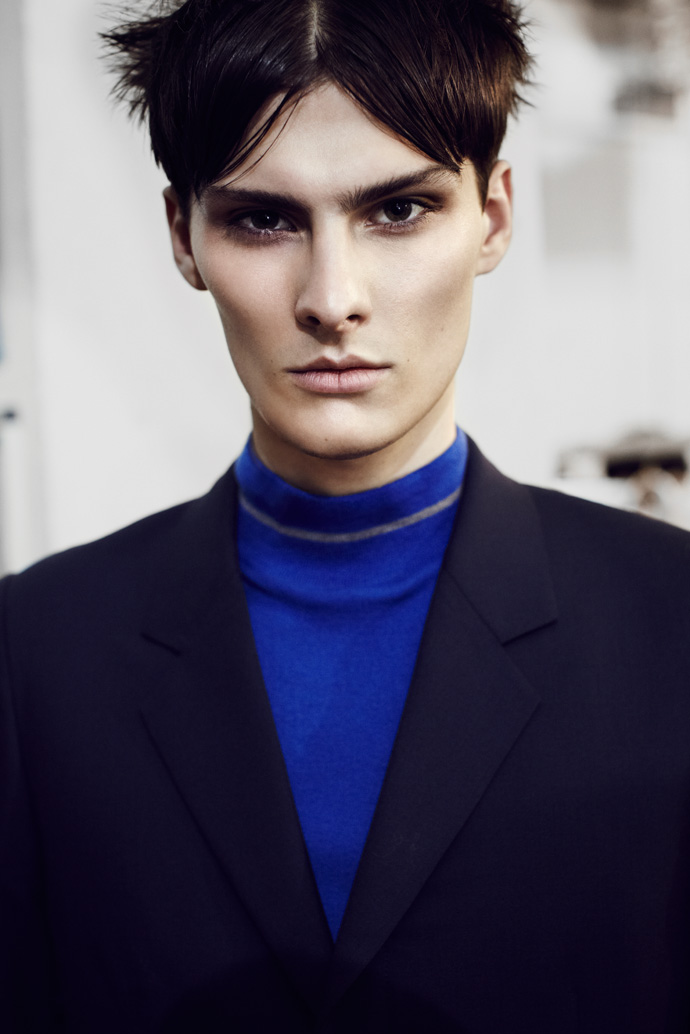
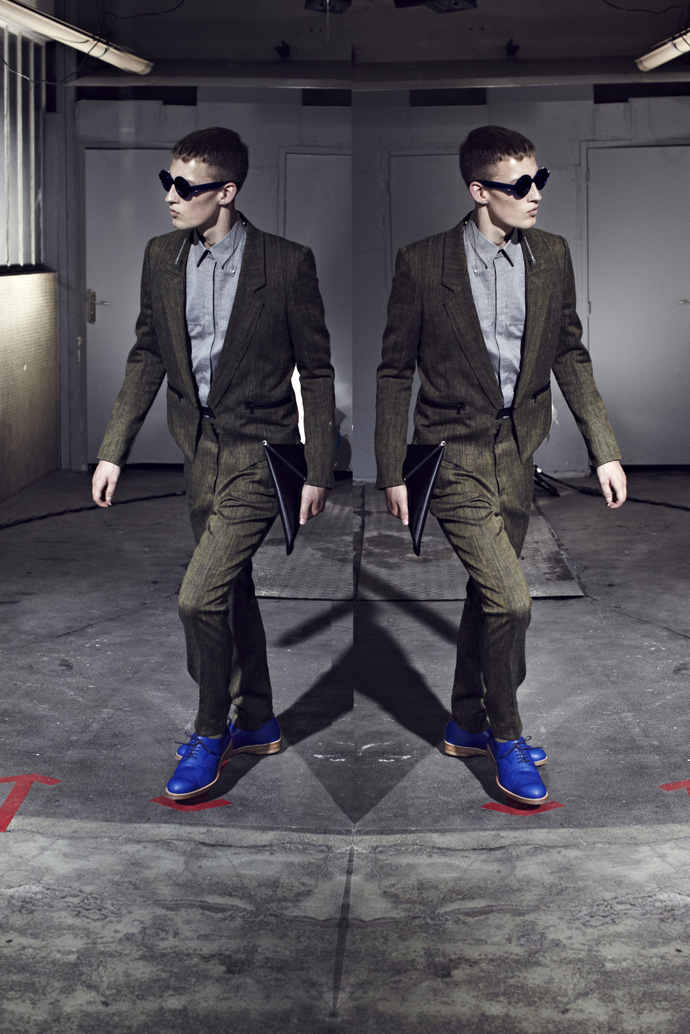 John Lawrence Sullivan's "Bauhaus" inspired collection, SS13. Photography by René Habermacher
John Lawrence Sullivan's "Bauhaus" inspired collection, SS13. Photography by René HabermacherRH: can you tell me more about “ELECTRIC AFRICA”: theme of the collection FW13/14, you just showed in Paris, what ideas are behind it?
AY: “Electric Africa” is a coined phrase. I had the idea to create a new, modern vision by combining tribal patterns associated directly with Africa with flashy colors instead of the standard earth tones. Tribal (triangular) elements were worked into various items and aspects like the cutting of the tailored jackets or the placement of the buttons. I also added a spacey essence reminiscent of the crop circles that suddenly appear in fields to the accessories, colors, and textures.RH: This collection also sports extraordinary footwear. Your sneakers have been hailed throughout. How did this design come together?
AY: I wanted create something akin to sneakers or trekking shoes, so I used Vibram soles. I also combined the base colors of the seasonwith highly contrasting hues in order to bring out a sense of Africa. I worked with a brand called ORPHIC when making the shoes.RH: Since you dropped your boxing for founding your label, fashion in Japan underwent quite some changes. How do you see the japanese approach today, what is your viewpoint and what influenced you over the course of time?
AY: When I started my brand in Tokyo my image was much more aggressive. I feel like back then many of the magazines adopted a fashionable approach, and that the buyers tried to answer the challenges the designers undertook with respect. But, as the economy got worse the magazines switched to much more easy to understand catalog-like appearance in order to make sales, which in turn influenced buyers, whose customers were influenced by this, to become much more conservative in their selections. So, there were a lot of negative things occurring in fashion here. The Tokyo runway shows were no different, as the focus shifted conspicuously to more “real” presentations rather shows with a bit a fantasy or elegance to them. Feeling all of this made me want to do my shows somewhere more stimulating, so I chose Paris.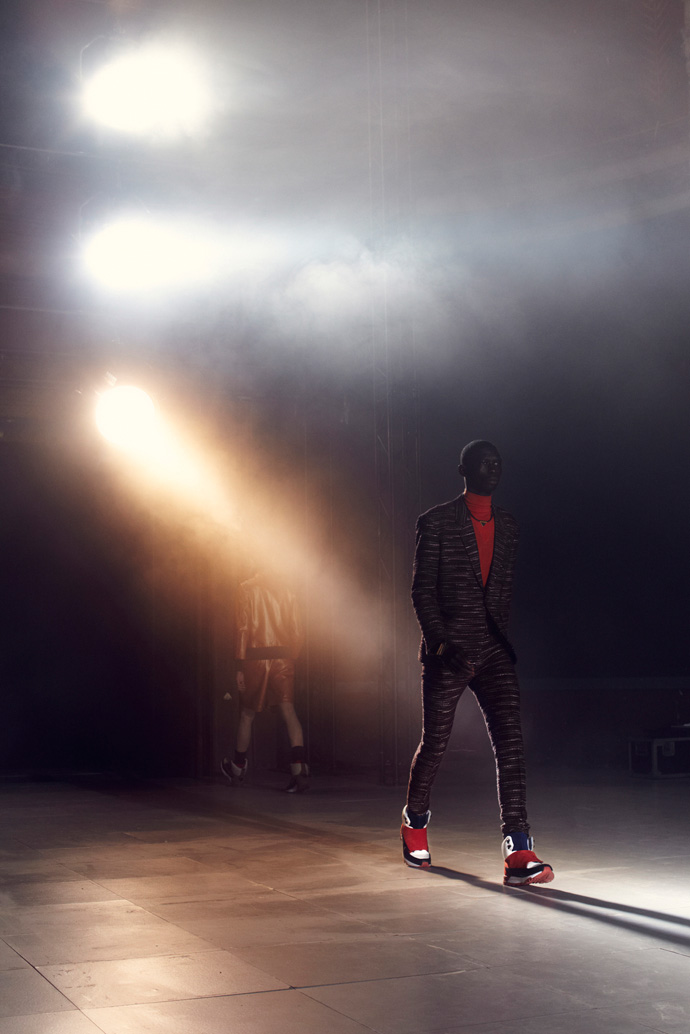
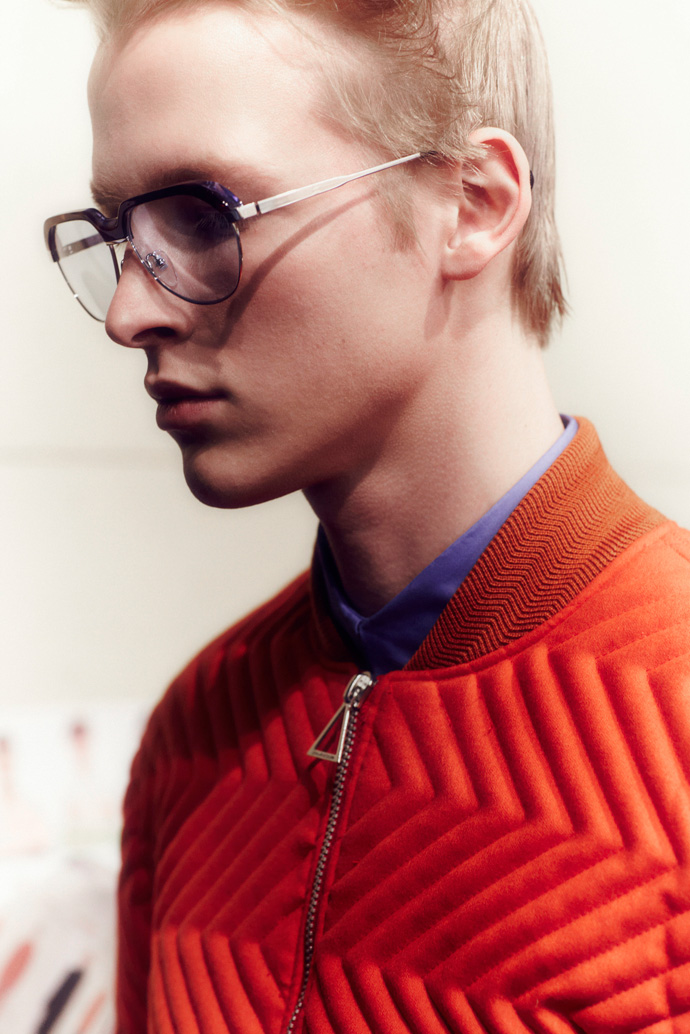 "Electric Africa", John Lawrence Sullivan FW13. Photography by René Habermacher
"Electric Africa", John Lawrence Sullivan FW13. Photography by René HabermacherRH: While developing your collection, are you having a specific type of man in the back of your head?
AY: I always imagine a man who possesses both beauty and strength in terms of appearance and mind. If I were to provide a sportsman as an example, there is a certain boxer who comes to mind…RH: Are there any parallels you can draw between your sports career and the one in fashion?
AY: One thing I realized when I first started working in fashion is that there is a common trait shared by boxing matches and fashion shows that only I seemed to notice. This was the way in which you worry over something that will last only few minutes on a single day for months in advance, battling with your anxieties and, as long as you don’t give up, preparing for the next match as soon as it’s all over regardless of whether you won or lost. The way everything seems so fleeting and transient once it’s all said and done is also the same.RH: The understanding of classic tailoring is a very strong element in your work. Now you started your women’s line: how does this apply here?
AY: Incorporating classic tailoring into women’s fashion is one of the most important elements for John Lawrence Sullivan. This isn’t something just any brand can do, so it’s something we will continue to actively working with in the future. One of the differences between men’s and women’s fashion for me was the way in which things like esthetic elements concealing points I had complexes about confused me a bit at first. Now I feel that I have learned to use men’s techniques to deal with these things.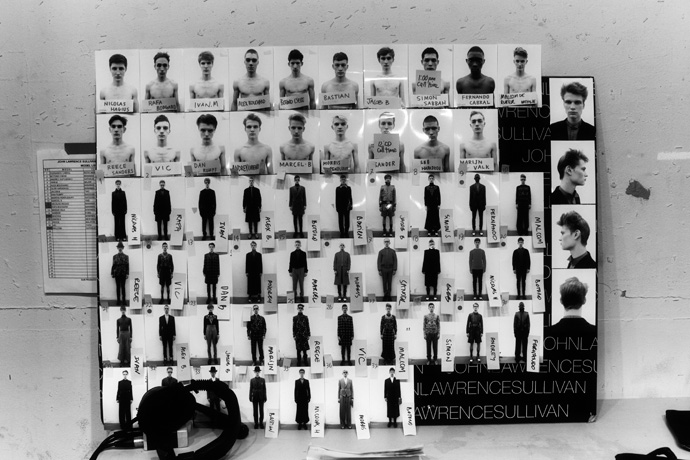 Showboard with looks and cast for "Electric Africa". Photography by René Habermacher
Showboard with looks and cast for "Electric Africa". Photography by René HabermacherRH: As you added another collection to your house – your work wheel must spin faster evidently, with 4 instead of 2 presentations.
AY: I always think of how I can break down the restrictions of the tailored look when I do my men’s designs. While there is the sense that I can be confident in breaking these restrictions down precisely because they exist, but with women’s my process is one of imposing my own restrictions on the things I design freely. So, there is a sense of mutual stimulation between my men’s and women’s lines that has been a good influence in my opinion. That said, I am definitely much busier than before…RH: Do you feel urged by the increasing numbers of pre-collections and cruise collections that the big houses lately launch?
AY: This is most likely just a sign of the conservative sales trends we’re seeing worldwide right now.The big houses are just doing this as a way of making sure they continue to pull in revenue. I too feel that JLS must do the same if we are to continue showing in Paris, so I’ll be considering various strategies for this in the days to come.RH: With clients all over the globe in different climate zones: do “season oriented” collections make still sense to you? (already the weather in Japan is quite different to the north american or european)
AY: Breaking things up by season allows designers to change up their mood and add depth to the presentation, so I most definitely think it has meaning. But, I also feel that in terms of actual sales it is often seasonless items that perform the best.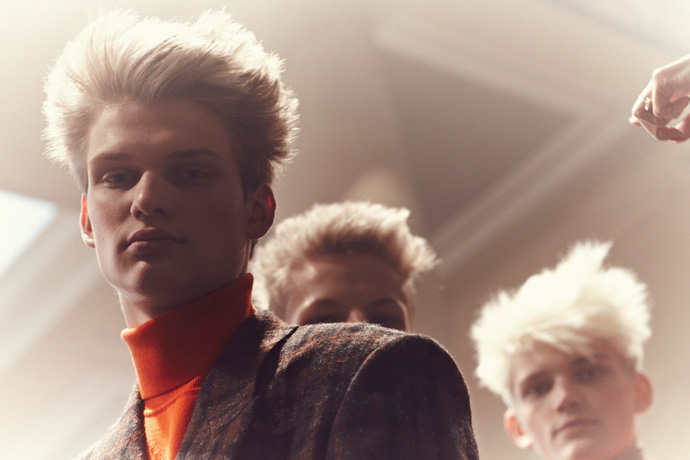 "Electric Africa", John Lawrence Sullivan FW13. Photography by René Habermacher
"Electric Africa", John Lawrence Sullivan FW13. Photography by René HabermacherRH: How do you perceive the present of fashion?
AY: I think what we are seeing is a mixture of various styles coming together.
This is also exactly why I feel that you can’t make it in this day and age unless you believe in yourself and keep making bold presentations. I guess you could say I feel we’re in an era where only the essentials survive. I want JLS to continue to be a brand that always takes up the challenge of presenting in Paris.RH: What is up next?
AY: The designs for my women’s exhibition in March and preparations for the 2014 S/S season.RH: What is the last thing you saw, read, heard or felt that stimulated you?
AY: Tadao Ando, James Turrell, Donald Judd, Taro Okamoto, Talking Heads, Pixies, David Bowie, Wes Anderson, Jim Jarmusch, Kinji FukasakuWebsite: John Lawrence Sullivan
00
